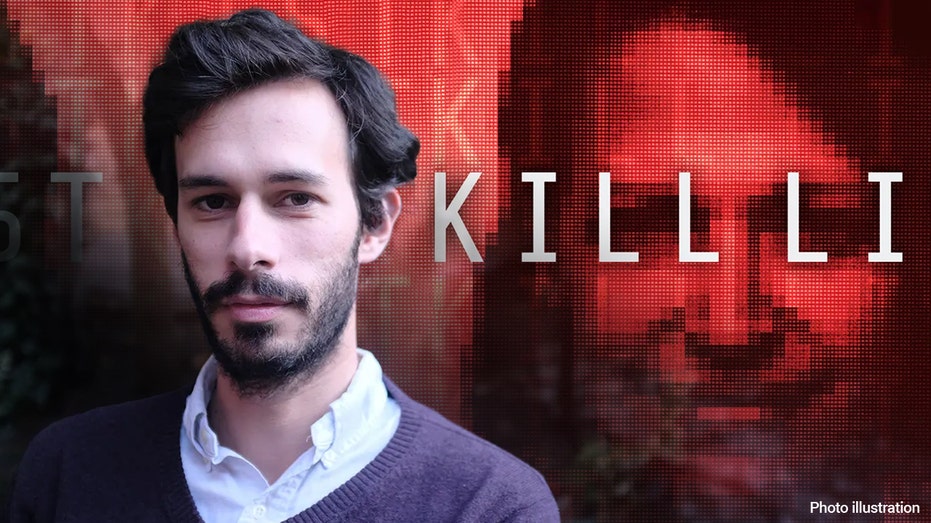
U.K.-based tech journalist Carl Miller is the host of the Wondery true-crime podcast “Kill List,” which tells the saga of a hitman-for-hire site on the dark web.
Carl Miller still gets sick to his stomach whenever he remembers seeing all the smiling faces of people who were targeted to be killed by so-called assassins.
“It’s horrifying – just awful,” the U.K.-based tech journalist told Fox News Digital. “These photos were always very pleasant. Some of them were their Facebook profile photos. You are staring at these photos, staring back at you. The targets always appear happy, glamorous and often surrounded by family. … You’re just staring into their eyes and thinking, ‘Do you have any idea you’re in danger?’”
Miller is the host of a new true-crime podcast on Wondery, “Kill List.” It explores how Miller came across a fake hitman-for-hire site on the dark web, prompting him and his team to warn police.
During his investigation, Miller also reached out to potential victims to tell them their private information — including workplace addresses and photographs — had been posted online.
LISTEN TO THE FOX TRUE CRIME PODCAST WITH EMILY COMPAGNO
The series covers some of the 175 kill orders that Miller’s team turned over to police, The Hollywood Reporter said. According to the outlet, that information has led to 32 convictions and over 150 years of prison time.
“Some of these kill orders would go on, page after page,” Miller recalled. “The instructions were really practical, like, ‘The target tends to leave at this time in the morning. This is their car and this is where they work. Be careful, they have a dog.’ There were lots of instructions about how to get the hit done.
“It also moved to justifications for why the person needs to die,” he shared. “We had to comb through these carefully because they were our best clues as to who might be taking out the order. … It is a very difficult thing to do, peering straight into the mind of someone who wants … someone else killed. And that is not a place that I think most people have to confront in their day-to-day lives.”
The saga began in 2020 when Chris Monteiro, an IT technician and hacker, was browsing the site and found a security vulnerability that gave him complete access to it, The Guardian reported. According to the outlet, he found a “kill list,” a spreadsheet listing hundreds of people from all over the world whom clients wanted eliminated.
“We were intending to do a podcast, which was supposed to look back at dark net assassinations over the last few years,” Miller explained. “We didn’t anticipate it, but Chris began to send us these live kill orders. Most of the story of the podcast is us scrambling to try and deal with all of that, trying to make sense of it and trying to react in a responsible way.”
With Monteiro’s help, Miller was able to review private messages between clients and the website’s owner. According to The Guardian, the website was a scam run by a Romanian crook who had no intention of providing the sinister services. Instead, the fraudster pocketed the payment.
FOLLOW THE FOX TRUE CRIME TEAM ON X
“People believed the site was real, and it isn’t,” Miller explained. “The hitman-for-hire site is not sending out assassins. It has no interest in sending out assassins. The Romanian cybercriminals have an interest in taking the money from the perpetrators — that’s all. And we realized that very early on. As soon as we started intercepting these kill orders, we could read that none of the assassinations were happening.
“If they were real assassins, they were the most incompetent assassins you would ever come across,” Miller added. “They kept getting lost, they’d lose their gun, the target would be too well protected or they would be in a different country. These were just beyond incompetent because there was no hitman. The Romanian cybercriminals were just trying to extort as much money as they could. And, then, they would just ignore the person from then on.
“But we could see that the real danger was coming from the people the targets on the list. They were deadly serious.”
The price for death varied, said Miller.
“There was a case in the U.K., a love triangle,” he explained. “There was a manager in a store who was having an affair with two employees. One of those employees tried to kill the other one. The order was only for about 100 pounds ($126.38). That’s the smallest that we saw. But then there was a U.S. doctor who paid over $50,000 for the hit. We saw everything in between. There were a lot of orders in the $10K-$40K range.”
Miller said once he realized the orders were real, he immediately called his local police in the U.K. He was ordered to get a mental health background check.
SIGN UP TO GET THE TRUE CRIME NEWSLETTER
“I think they were worried that I was mad,” said Miller. “Once they were convinced that I was not, in fact, mad, they took it seriously. But the problem was that these orders were spread all over the world. We had cases in Russia, Finland, Spain, the U.S. … We were laughed out of a police station in Spain. That’s on tape, police laughing at us.
“In America, police told one of the targets that he thought we were the scammers. In Switzerland, the police told one of the targets they suspected we were running the site for a story. There was no evidence that any of that was true.
“I would say that was probably the lowest and most difficult time in this whole investigation for us.”
When Miller and his team felt they weren’t being taken seriously by police, they reached out to the targets themselves in hopes of warning them. They were also willing to provide the targets with whatever they needed to inform law enforcement.
“It’s very unusual to step out of a normal role as a journalist,” said Miller. “Journalists report. They wait. They watch. But they don’t step in. And I think if there was any other way of us intervening in another way that would have kept these people safe, we would have done that first. But we could not think of any other way that would’ve been effective. … You had the Romanian cybercriminals that were trying to stay hidden from us, but you also had police who weren’t believing us. … That’s why we did it.”
At first, Miller was worried about reaching out to the targets, wondering if those who would want them taken out would panic and “take matters into their own hands.” He also didn’t want those on the receiving end to “go into a panic attack.”
The reaction he received was shocking.
GET REAL-TIME UPDATES DIRECTLY ON THE TRUE CRIME HUB
“Most people were stoic and calm during the calls,” said Miller. “It took them a while to let the message sink in. One of the women I spoke to was so unruffled by the news that she didn’t even change her plans for the evening. She went to see her friend who lives right next to her estranged husband.
“One guy from Wisconsin asked very reasonable questions. But when we spoke to him a week later, he told me that he was surrounded by a constant sense of unsafety. He would park his car, get out of his car and get ready to fight. He was always waiting for someone to jump out of the bushes. Whenever he would shovel snow, every time a car passed by, he would rush back inside his house. … I think once it does sink in, it’s very difficult for people to find ways of feeling safe again.”
The podcast revealed that, eventually, the FBI got a whiff of Miller’s investigation. It believed he was genuine.
“When they verified the information and saw it was real, they began to investigate the U.S. cases. … After that happened, we began to see more effective police investigations happen.”
Miller hopes the podcast will help raise awareness about similar sites that could be out there. And this, he said, could happen to anyone.
“I don’t want to scare people unnecessarily, but I think one of the great surprises I had was how normal everyone was, whether they were a target or a perpetrator. Going into this, I thought we would be dealing with drug deals gone wrong or organized crime, but that wasn’t the case.
“The people on the list and the people that put them there, in most cases, looked like you and me. They had normal lives, normal jobs. And, in most cases, the perpetrators were able to maintain a public exterior of respectability at the same time as they were secretly, and sometimes desperately, trying to have someone killed.”




